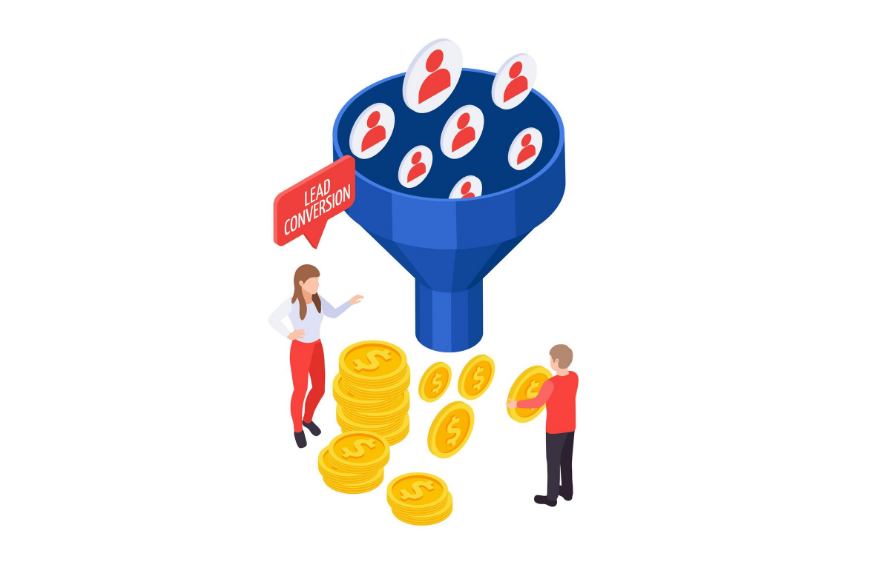Table of Contents
- Understanding Omnichannel Lead Nurturing
- The Importance of Omnichannel Lead Nurturing
- Key Components of an Effective Omnichannel Lead Nurturing Strategy
- Real-World Case Studies
- Best Practices for Implementing Omnichannel Lead Nurturing
- Conclusion: Building Lasting Relationships Through Omnichannel Lead Nurturing
In the dynamic world of modern marketing, businesses are presented with a multitude of channels to connect with potential customers. However, merely being present on multiple platforms isn’t sufficient. To truly engage prospects and guide them through the buyer’s journey, a cohesive and strategic approach is essential. This is where omnichannel lead nurturing comes into play.
Understanding Omnichannel Lead Nurturing
Lead nurturing refers to the process of developing and reinforcing relationships with potential buyers at every stage of the sales funnel. The goal is to listen to the needs of prospects, provide relevant information, and build trust over time. When this nurturing process is executed across multiple, integrated channels—such as email, social media, SMS, and more—it becomes omnichannel lead nurturing.
Unlike multichannel marketing, which involves using multiple channels in isolation, omnichannel strategies ensure a seamless and consistent experience for the prospect, regardless of the platform they engage with.
The Importance of Omnichannel Lead Nurturing
- Consistent Brand Experience: Prospects receive a unified message across all touchpoints, reinforcing brand identity and trust.
- Increased Engagement: By meeting prospects where they are—be it on email, social media, or other platforms—businesses can engage them more effectively.
- Higher Conversion Rates: A cohesive strategy that nurtures leads across various channels can lead to higher conversion rates, as prospects feel more understood and valued.
- Improved Customer Retention: Continuous engagement through multiple channels helps in building long-term relationships, leading to better customer retention.
Key Components of an Effective Omnichannel Lead Nurturing Strategy
1. Segmentation and Personalization
Understanding the unique needs and behaviors of different prospect segments is crucial. By leveraging data analytics, businesses can segment their audience based on various criteria such as demographics, behavior, and engagement history. This segmentation allows for personalized messaging that resonates with each group, enhancing the effectiveness of the nurturing process.
2. Integrated Technology Stack
Utilizing an integrated set of tools ensures that data flows seamlessly between platforms. For instance, integrating CRM systems with email marketing tools, social media platforms, and analytics software enables businesses to track prospect interactions across all channels, providing a holistic view of each lead’s journey.
3. Consistent Messaging Across Channels
While the medium may vary, the core message should remain consistent across all platforms. Whether a prospect interacts via email, social media, or in-person events, the messaging should align with the brand’s voice and objectives, ensuring a cohesive experience.
4. Automated Workflows
Implementing automated workflows can streamline the nurturing process. For example, setting up automated email sequences triggered by specific actions—like downloading a resource or attending a webinar—ensures timely follow-ups and keeps prospects engaged without manual intervention.
5. Continuous Monitoring and Optimization
Regularly analyzing the performance of each channel and the overall strategy is vital. By monitoring key metrics such as open rates, click-through rates, and conversion rates, businesses can identify areas for improvement and optimize their nurturing efforts accordingly.

Real-World Case Studies
1. Belkins and the Startup Investment Platform
A leading startup investing platform in the U.S. faced challenges with inconsistent lead flow and multiple vendors. They partnered with Belkins to implement an omnichannel lead generation strategy. The approach included emails, LinkedIn outreach, and intent-based calling.
Results:
- 346 appointments booked over 15 months.
- 13 deals closed, generating $150K in revenue.
- 9% lead conversion rate, surpassing the previous 3% rate.
- 125% ROI, exceeding the industry average of 107%–110% (belkins.io).
2. HarborChase Senior Living Communities
HarborChase, a senior living community operator, collaborated with Markentum to enhance lead nurturing. They integrated their CRM with email marketing tools and segmented their audience based on sales stages.
Results:
- 27% increase in email open rates.
- 37 prospects converted into move-in customers within three months.
- Improved lead qualification and sales effectiveness (growmarkentum.com).
3. Viseven and the Pharmaceutical Client
A top 50 pharmaceutical enterprise from France aimed to increase registrations to a new web portal section for cardiologists. Viseven implemented an omnichannel customer journey using email, SMS, and social media.
Results:
- 98% goal attainment.
- 196 new registrations within two weeks.
- Threefold increase in registration rate (viseven.com).
Best Practices for Implementing Omnichannel Lead Nurturing
- Map the Customer Journey: Understand the typical path a prospect takes from awareness to decision. This mapping helps in creating relevant content and touchpoints at each stage.
- Ensure Cross-Channel Consistency: Maintain uniform branding, messaging, and tone across all channels to provide a cohesive experience.
- Leverage Data Analytics: Use analytics tools to gather insights into prospect behavior and preferences, allowing for more targeted and effective nurturing.
- Provide Value at Every Touchpoint: Whether it’s through informative content, personalized offers, or timely follow-ups, ensure that each interaction adds value to the prospect’s journey.
- Test and Iterate: Regularly test different approaches, messages, and channels to identify what resonates best with your audience and refine your strategy accordingly.
Conclusion: Building Lasting Relationships Through Omnichannel Lead Nurturing
In the competitive landscape of modern business, engaging prospects through a single channel is no longer sufficient. An omnichannel lead nurturing strategy ensures that prospects receive a consistent and personalized experience across all touchpoints, fostering trust and guiding them through the buyer’s journey. By implementing the best practices outlined above and learning from real-world case studies, businesses can enhance their lead nurturing efforts, leading to increased engagement, higher conversion rates, and long-term customer relationships.
Remember, the key to successful lead nurturing lies in understanding your prospects, delivering value at every interaction, and maintaining consistency across all channels. Embrace the power of omnichannel strategies to not only meet your prospects where they are but also to build meaningful connections that drive business growth.






Leave a Reply